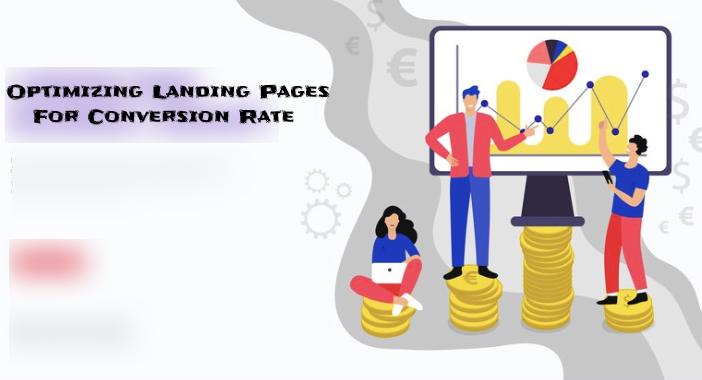Landing pages are a critical component of any digital marketing campaign. They serve as the entry point for visitors and play a pivotal role in achieving conversion goals. Conversion rate optimization (CRO) is the process of enhancing these pages to increase the percentage of visitors who take the desired action. In this article, we’ll explore key strategies to optimizing landing pages for higher conversion rates.
Define Clear Objectives
Before you begin optimizing your landing page, it’s essential to define your objectives. What action do you want visitors to take? Whether it’s signing up for a newsletter, making a purchase, or filling out a contact form, having a clear goal is the first step in conversion rate optimization.
Craft Compelling Headlines
The headline is often the first thing visitors see. Make it attention-grabbing, relevant to the offer, and concise. A powerful headline can pique the interest of your audience and encourage them to explore further.
Create Persuasive Content
The content on your landing page should be informative and persuasive. Highlight the benefits of your offer and clearly explain what visitors will gain by taking the desired action. Use bullet points and subheadings to make the content scannable.
Read: A Comprehensive Guide To Core Web Vitals Assessment
Strong Call to Action (CTA)
Your CTA button should be highly visible and compelling. Use action-oriented words like “Get Started,” “Subscribe Now,” or “Buy Today.” Ensure that the CTA stands out from the rest of the page by using contrasting colors.
Mobile Optimization
With a growing number of users accessing websites on mobile devices, it’s crucial to ensure that your landing page is responsive and optimized for mobile viewing. Test the page on various devices to ensure a seamless experience.
Read: Google’s PageSpeed Insights: Optimizing Website Performance
Minimalist Design
A cluttered landing page can distract visitors and reduce conversions. Use a clean, minimalist design that directs the visitor’s focus toward the CTA and the key message. Remove unnecessary elements that don’t contribute to the conversion goal.
Trust Signals
Incorporate trust signals on your landing page to build credibility. This can include customer testimonials, security badges, industry certifications, and guarantees. Trust signals reassure visitors that they can trust your offer.
Visual Elements
Use high-quality images and videos to support your message. Visual content can help explain your offer, create a connection with visitors, and improve overall user engagement.
A/B Testing
A/B testing involves creating variations of your landing page and testing them to determine which performs better. Test elements such as headlines, CTA buttons, colors, and content to find the most effective combination.
Loading Speed
A slow-loading landing page can lead to high bounce rates and lower conversions. Optimize images, minimize code, and leverage browser caching to ensure fast loading times.
Analytics and Tracking
Implement analytics tools like Google Analytics to monitor the performance of your landing page. Track metrics such as bounce rate, conversion rate, and user behavior to identify areas for improvement.
Personalization
Consider using personalization to tailor the landing page experience to individual visitors. This can involve showing different content or offers based on user demographics or behavior.
Social Proof
Showcase social proof in the form of user reviews, ratings, or case studies. Positive feedback from previous customers can influence visitors’ decisions.
Consistency
Ensure that the messaging and design of your landing page align with the corresponding ads or marketing campaigns. A consistent user experience helps build trust.
Exit-Intent Pop-ups
Exit-intent pop-ups can be used to offer a last-minute incentive or capture contact information from visitors who are about to leave your page.
Conclusion
In conclusion, optimizing landing pages for a higher conversion rate involves a combination of strategic design, persuasive content, and user-focused elements. Regular testing and analysis are crucial to fine-tune your landing pages for optimal results. By implementing these strategies, you can increase your chances of converting visitors into leads, customers, or subscribers.

